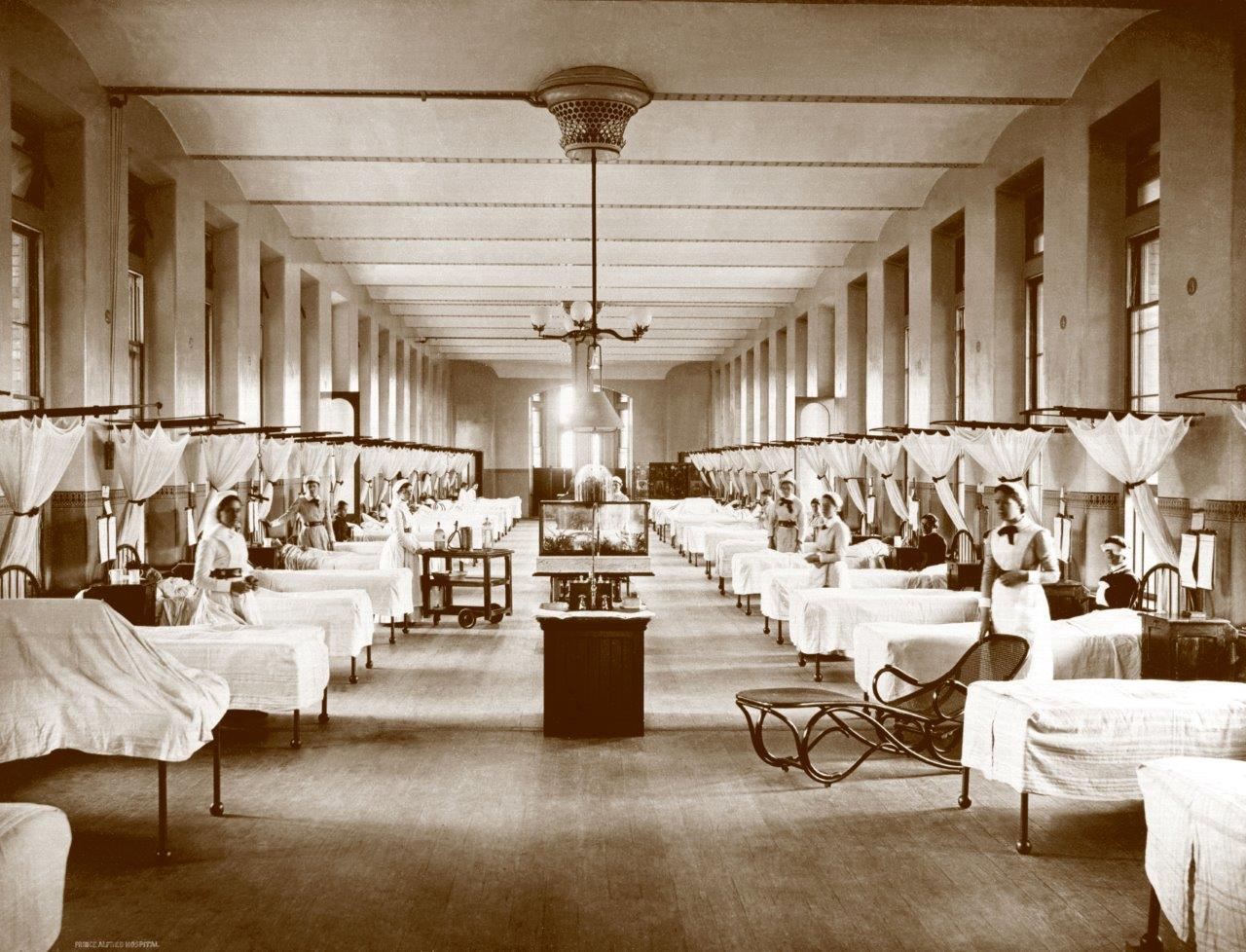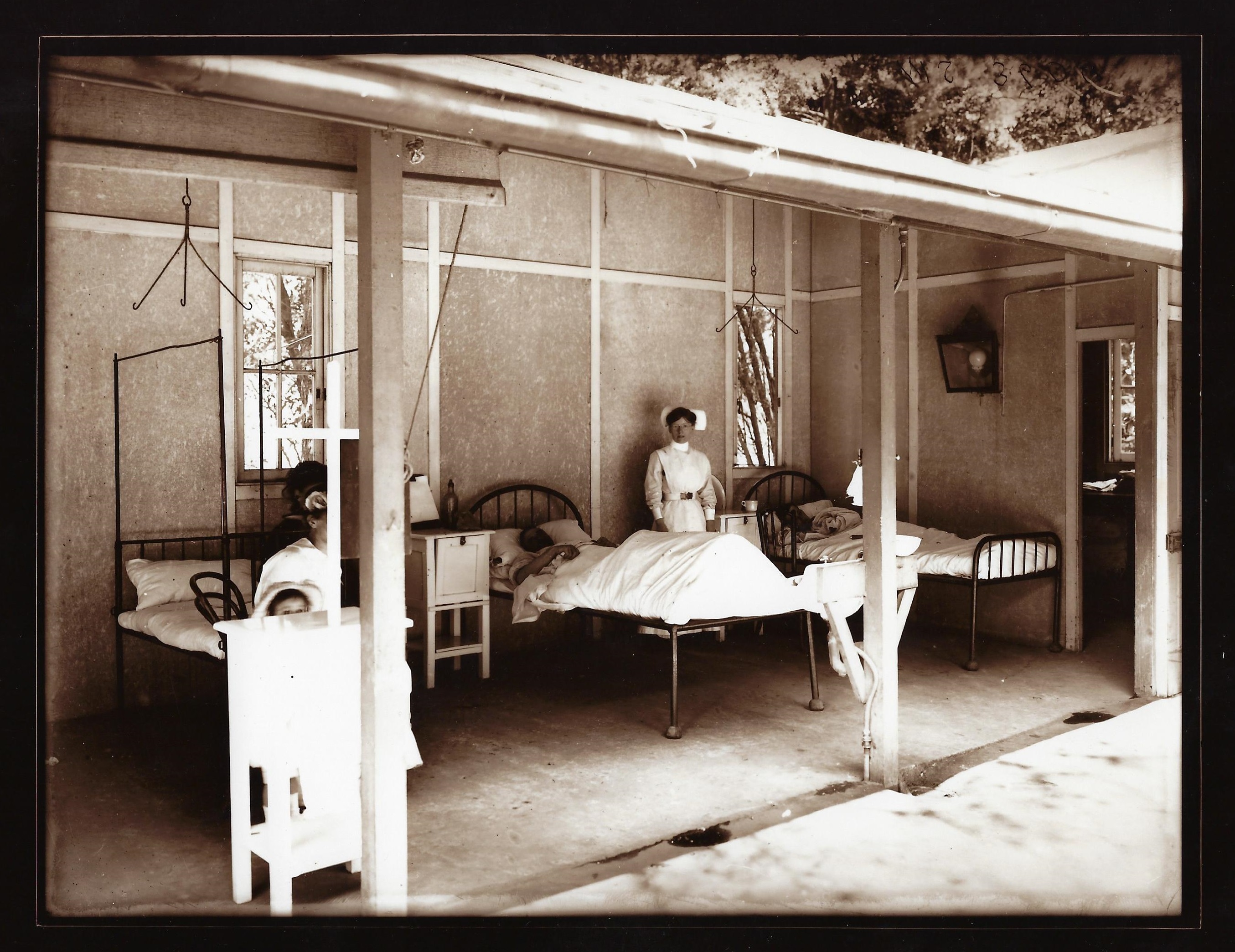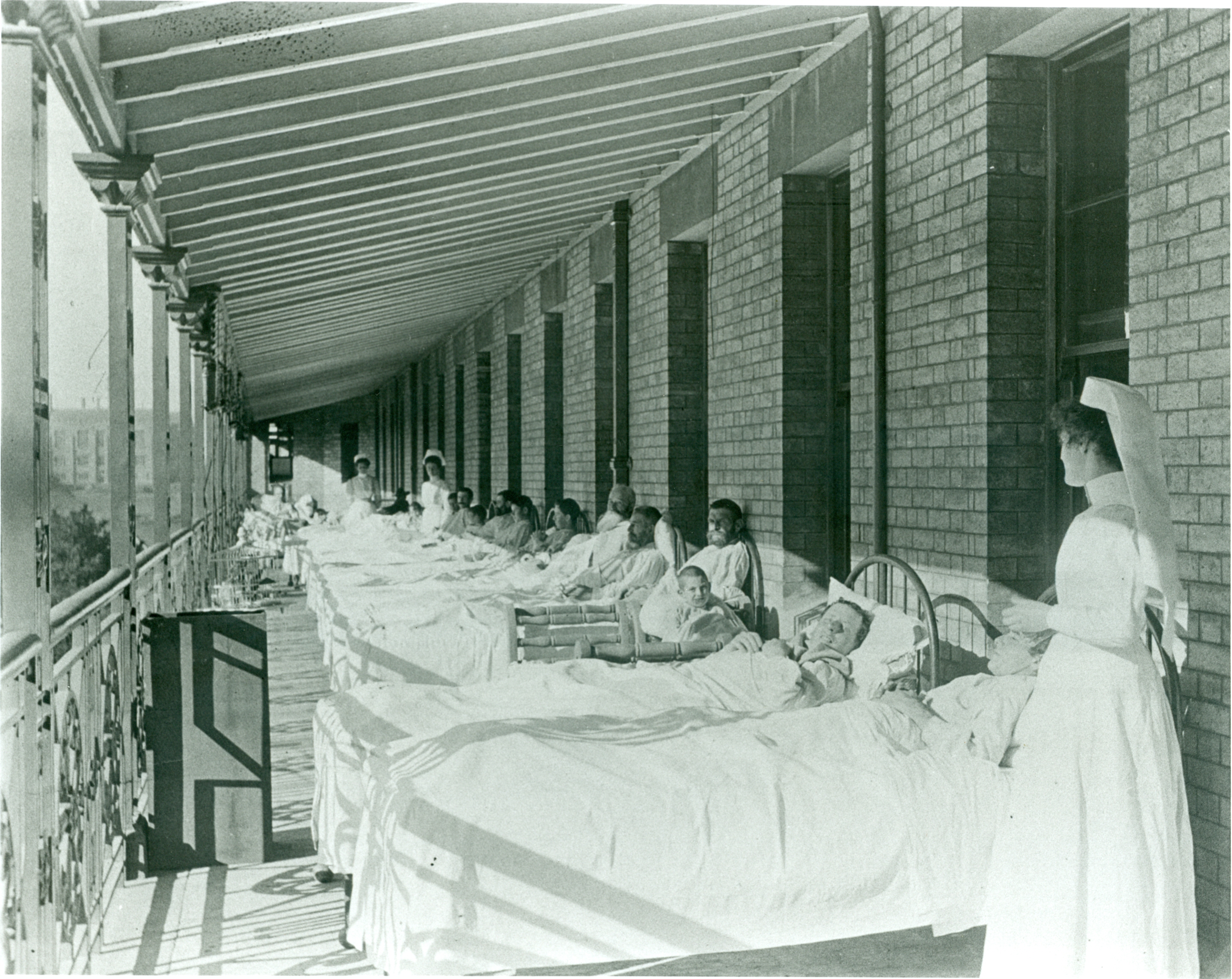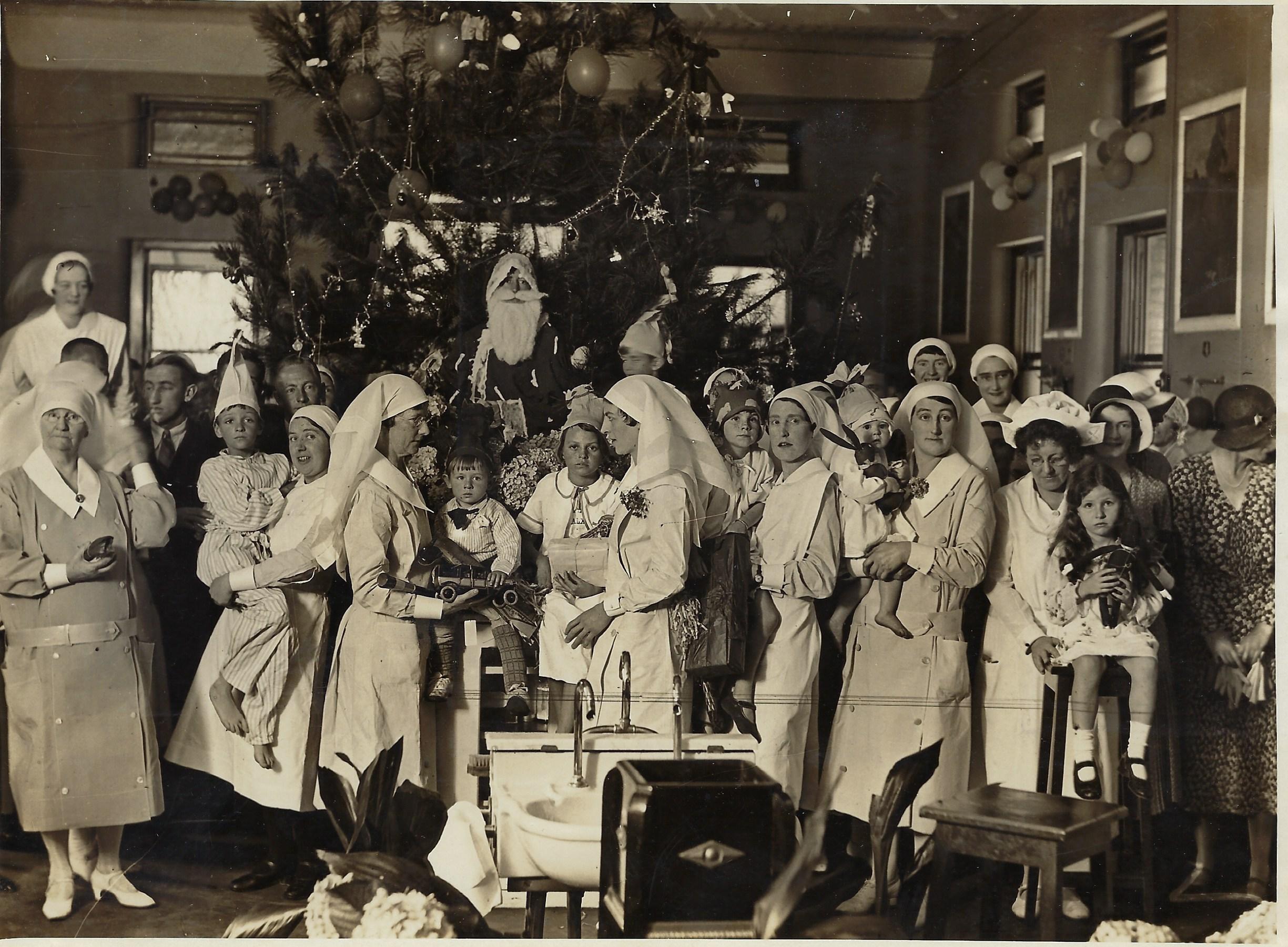
Atrium Wards Display
| Category: RPA Historical Walking Tour |
| Stop: 2 |
| Location: Level 2 Atrium, RPA Main Building |

Located on the wall above (at Stop 2) are six ward plaques which tell the story of how Royal Prince Alfred Hospital wards have evolved over time. The Nightingale styled ward, developed by and named after British statistician Florence Nightingale, were long, open rooms that held up to 30 beds, quite the contrast to the modern wards we know today which hold four to six beds in bays. Take a moment to read the inscriptions on the walls to get a better understanding of each of these named wards.

Royal Prince Alfred Hospital has undergone many transformations in its lifetime: wings have been added, expanded, and demolished several times since its founding in 1882. C-Block Pavilion and D-Block Pavilion were opened with the initial construction of the Administration Building in 1882, followed by the Operations Block (later renamed Princes Block) in 1887 and the Queen Victoria and Prince Albert Memorial Pavilions in 1904. Each of these buildings held wards at some point during the hospital's history.

C-Block, D-Block, Princes Block, the Kitchens, and Laundry Block were all demolished in the 1980s to make way for future developments such as the Edinburgh Block (E-Block, opened in 1984) and the Clinical Services Building (opened in 2005), in whose atrium this display now stands. These blocks each have contained one or more of the wards whose plaques you see before you (at Stop 2). Ward names were typically named after benefactors to the hospital, philanthropic individuals who bequeathed essential sums of money to improve Royal Prince Alfred Hospital.
The nurses used hurricane lanterns at night, and we were told not to hold them too low as the male patients could see the reflection of the nurse's legs. Although there was electric lighting in most of the wards, the Alfred and Mary Roberts Wards still had gaslight in 1920.
Nurse Dorothy Armstrong, 1935
